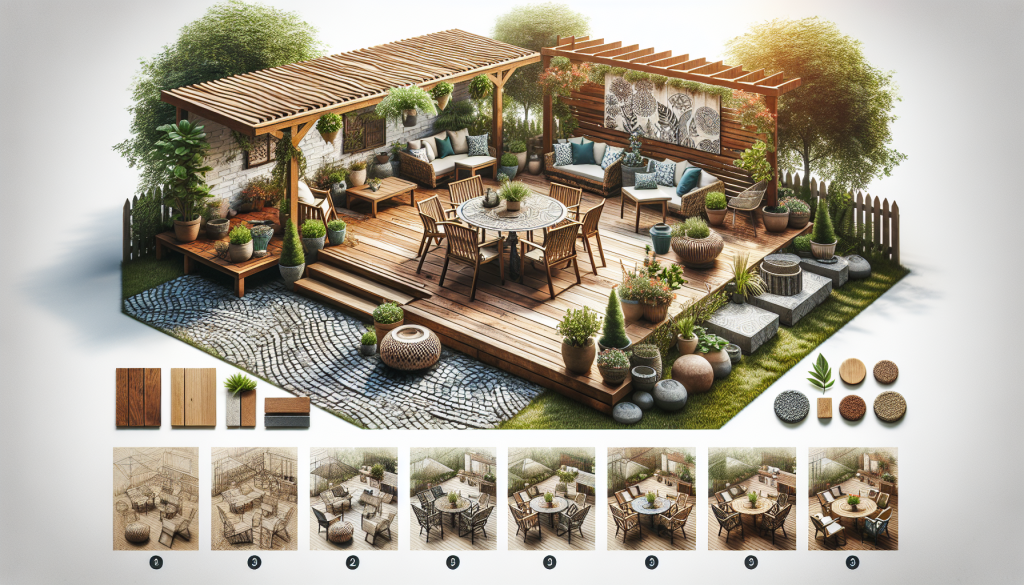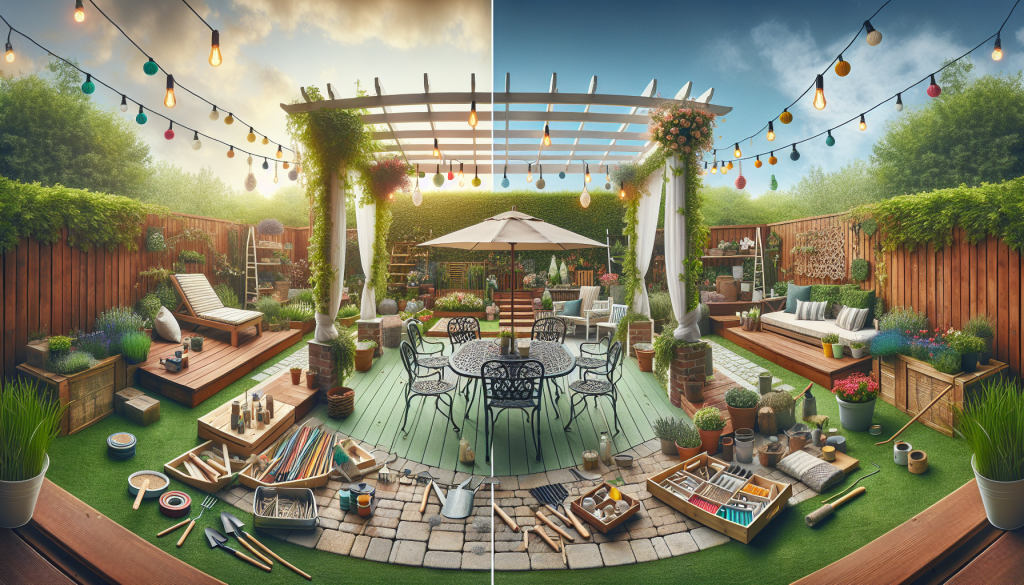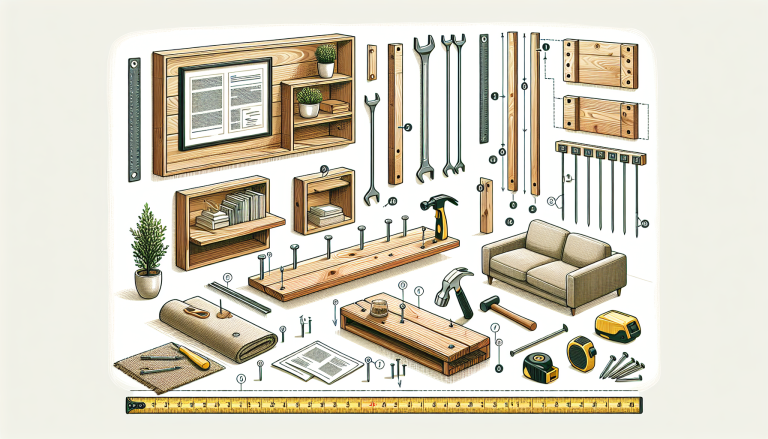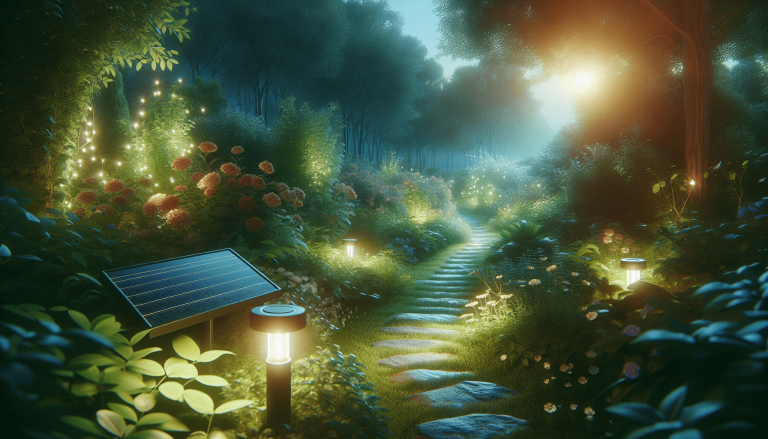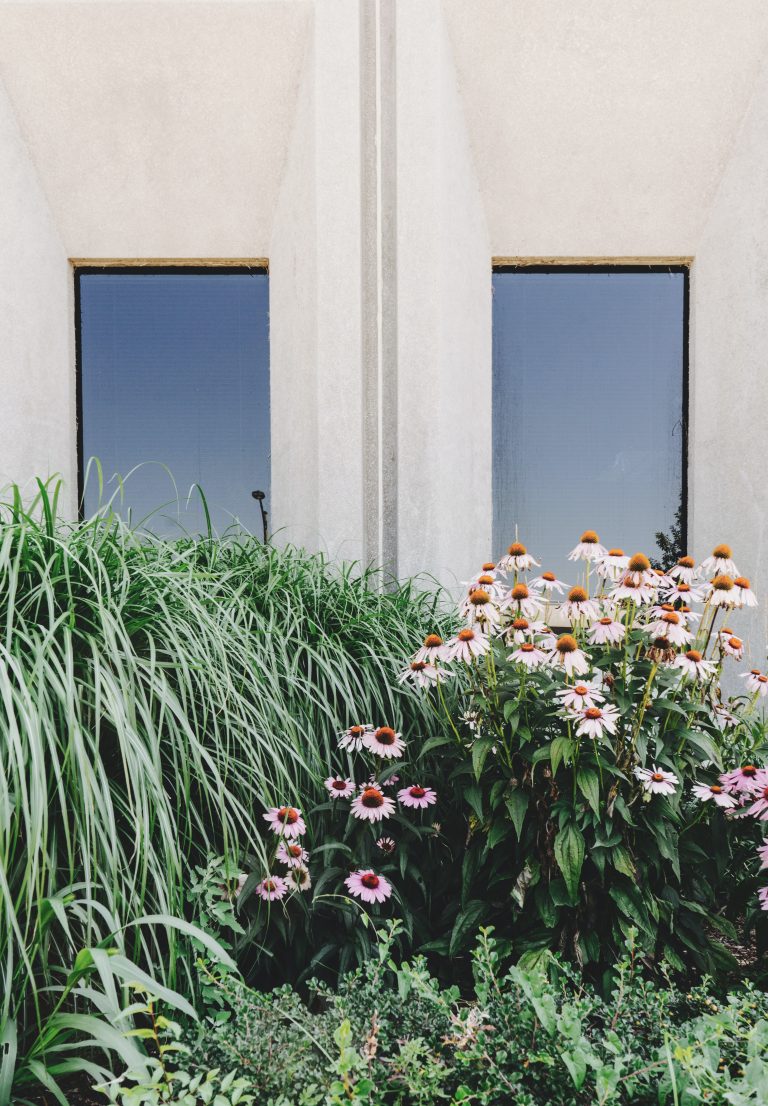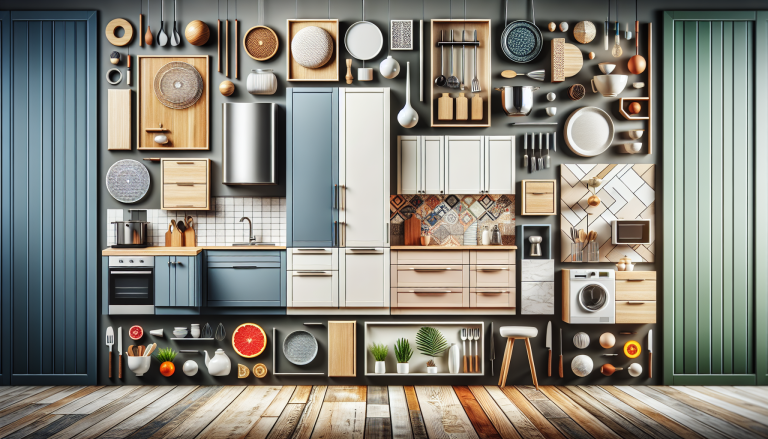Imagine transforming your backyard into a cozy oasis where you can unwind and entertain friends and family. If you’ve been longing for a DIY project that blends creativity, functionality, and relaxation, building your own outdoor seating area is just the endeavor for you. From simple benches to elaborate lounges, this article will guide you through the steps of creating a personalized oasis in your own backyard. With a little creativity, some handy tools, and a dash of enthusiasm, you’ll soon be enjoying your very own outdoor haven. So grab your notepad and get ready to bring your backyard dreams to life!
Table of Contents
ToggleChoosing the Right Location for Your Outdoor Seating Area
Considering the size of your backyard
When choosing the location for your outdoor seating area, the first thing to consider is the size of your backyard. Assess how much space you have available and determine how much of it you want to allocate for your seating area. This will help you determine the layout and size of your seating structure and ensure that it fits comfortably within your backyard.
Assessing the amount of sunlight and shade
Another important factor to consider is the amount of sunlight and shade in different areas of your backyard throughout the day. Depending on your preferences and how you plan to use your seating area, you may want to choose a location that offers a balance of both sunlight and shade. This will allow you to enjoy the outdoors while also providing relief from direct sunlight during the hottest parts of the day.
Taking into account the natural landscape and surroundings
The natural landscape and surroundings of your backyard should also play a role in determining the location of your outdoor seating area. Consider any existing trees, plants, or features that you want to highlight or incorporate into your design. Additionally, take into account any scenic views or architectural elements that you want to maximize or minimize when selecting the location for your seating area.
Considering privacy and noise levels
Privacy and noise levels are important considerations when choosing the location for your outdoor seating area. Assess how exposed or secluded different areas of your backyard are and determine your desired level of privacy. Consider factors such as neighboring properties, busy streets or highways, and potential noise sources when selecting the location that will provide you with the desired level of tranquility and seclusion.
Checking for any local regulations or permits
Before finalizing the location of your outdoor seating area, it is crucial to check for any local regulations or permits that may apply to building structures or making modifications in your backyard. Certain areas may have zoning restrictions or homeowner association rules that dictate where and how you can build outdoor seating areas. By doing your due diligence and ensuring compliance with any regulations, you can avoid potential legal issues and enjoy your seating area with peace of mind.
Design and Planning
Determining the purpose and function of your seating area
Before diving into the design and planning process, it is important to determine the purpose and function of your seating area. Are you looking to create a space for outdoor dining, entertaining guests, or simply lounging and relaxing? Defining the purpose and function will help guide your design decisions and ensure that your seating area meets your specific needs and preferences.
Deciding on the seating capacity and arrangement
Once you have established the purpose and function of your seating area, you can determine the seating capacity and arrangement that best suits your needs. Consider the number of people you expect to accommodate regularly and whether you want a single seating area or multiple smaller seating areas. This will help you determine the size and layout of your seating structure and ensure that it can comfortably accommodate your desired number of guests.
Selecting a style and theme for your outdoor space
Choosing a style and theme for your outdoor space can help create a cohesive and visually appealing seating area. Consider the overall aesthetic of your home and backyard, as well as your personal preferences. Whether you prefer a modern and sleek design, a rustic and natural look, or a vibrant and colorful atmosphere, selecting a style and theme will guide your material and color choices, as well as other design elements.
Choosing the right materials and finishes
Selecting the right materials and finishes is crucial for creating a durable and weather-resistant outdoor seating area. Consider materials that are suitable for outdoor use, such as pressure-treated wood, metal, or composite materials. Take into account factors such as durability, resistance to rot and insects, and maintenance requirements when choosing materials. Additionally, consider the finishes, such as stains or paints, that will enhance the aesthetics and longevity of your seating area.
Creating a detailed layout and blueprint
Before starting construction, it is important to create a detailed layout and blueprint of your outdoor seating area. This will serve as a guide for the construction process and ensure that all measurements and dimensions are accurate. Include details such as the placement of seating, the location of any additional features or structures, and any electrical or plumbing requirements. By having a clear plan in place, you can minimize errors and ensure a smooth construction process.
Preparing the Site
Clearing the area and removing any obstacles
Before you can begin construction, it is essential to clear the site of any debris, vegetation, or obstacles. Remove any rocks, roots, or other objects that may interfere with the construction process or impact the stability of your seating area. Clearing the area will provide a clean and level surface to work with and ensure that your seating area is built on a solid foundation.
Leveling the ground and ensuring proper drainage
Properly leveling the ground is crucial for the stability and functionality of your seating area. Use a leveling tool or laser level to ensure that the ground is even and free of any slopes or depressions. Additionally, ensure that the site has proper drainage to prevent water from pooling around your seating area. This can be achieved by grading the area or adding drainage solutions such as French drains or gravel trenches.
Marking the boundaries and dimensions of the seating area
To ensure accuracy and avoid any encroachment onto neighboring properties, it is important to mark the boundaries and dimensions of your seating area. Use stakes and string to outline the perimeter and indicate the desired size and shape of your seating area. This will serve as a visual guide during the construction process and help maintain the integrity of your seating area.
Digging holes for posts or foundations, if required
Depending on the design and structure of your seating area, you may need to dig holes for posts or foundations. Use a post hole digger or an auger to create the necessary holes at the designated locations. Ensure that the holes are deep enough to provide stability and support for your seating structure. Consider factors such as soil conditions and local building codes when determining the size and depth of the holes.
Applying weed barrier fabric and gravel, if needed
To prevent weed growth and promote proper drainage, consider applying a weed barrier fabric and a layer of gravel to the surface of your seating area. The weed barrier fabric will prevent weeds from infiltrating your seating area and minimize maintenance efforts. The layer of gravel will help improve drainage and provide a stable base for your seating structure. This step is particularly important if you are building your seating area directly on bare ground.
Building the Seating Structure
Constructing the framework using pressure-treated wood
Building the framework of your seating structure is a crucial step in the construction process. Use pressure-treated wood, which is resistant to rot and insects, to ensure the longevity and durability of your seating area. Cut the wood to the appropriate lengths and assemble the framework according to your layout and blueprint. Secure the joints using screws or nails to create a sturdy and stable structure.
Building a sturdy and supportive foundation
A sturdy and supportive foundation is essential for the stability and longevity of your seating structure. Ensure that the foundation is built on a solid and level surface, such as concrete footings or pavers. Use appropriate hardware, such as brackets or anchors, to secure the framework to the foundation and prevent movement or shifting. This will ensure that your seating structure can withstand the elements and provide a safe and secure seating area.
Building walls or partitions for added privacy or coziness
If you desire additional privacy or coziness in your seating area, consider building walls or partitions. These can be constructed using the same materials as your seating structure and can be partially or fully enclosed depending on your preferences. Walls or partitions can provide a sense of enclosure and create a more intimate and secluded seating area within your backyard.
Installing a pergola, awning, or shade structure
To provide shade and protection from the elements, consider installing a pergola, awning, or shade structure. These can be freestanding or attached to your seating structure and can be made from materials such as wood, metal, or fabric. Choose a design and style that complements your seating area and provides the desired amount of shade and shelter. This will enhance the functionality and comfort of your outdoor seating area.
Incorporating storage options, such as benches with hidden compartments
To maximize the functionality of your seating area, incorporate storage options such as benches with hidden compartments. These can serve as seating as well as storage for cushions, pillows, or other outdoor accessories. Consider the dimensions and capacity of the storage compartments to ensure that they can accommodate your needs. Utilizing storage options will help keep your seating area organized and clutter-free.
Choosing and Installing Seating
Selecting the right type of seating, such as benches, chairs, or loungers
When choosing seating for your outdoor seating area, consider the type of seating that best suits your needs and preferences. Whether you prefer benches, chairs, loungers, or a combination of different seating options, select pieces that are comfortable and functional. Take into account the size and layout of your seating area to ensure that the seating fits seamlessly and provides ample space for relaxation and socializing.
Considering comfort, durability, and weather-resistance
Comfort, durability, and weather-resistance are important factors to consider when selecting seating for your outdoor seating area. Look for seating options that are made from materials designed for outdoor use, such as weather-resistant wood or metal, or synthetic materials that are resistant to sun damage and moisture. Additionally, consider adding cushions, pillows, or other accessories that provide extra comfort and can be easily removed or replaced.
Building or assembling the seating pieces
Once you have selected your seating pieces, it’s time to build or assemble them according to the manufacturer’s instructions. If you are using benches or chairs made from wood or metal, assemble the pieces using the provided hardware. If you have chosen modular or sectional seating, follow the instructions for connecting the different components. Be thorough and ensure that all connections are secure to guarantee the stability and safety of your seating.
Securing the seating to the structure or foundation
To prevent movement or tipping, it is important to secure your seating to the structure or foundation. This can be achieved by using brackets or anchors, or by screwing the seating pieces directly into the framework or foundation. Follow the manufacturer’s recommendations for securing the seating securely and ensure that all connections are tight. This will provide stability and safety for you and your guests while using the seating area.
Adding cushions, pillows, or other accessories for added comfort
To enhance the comfort and aesthetics of your seating area, consider adding cushions, pillows, or other accessories. Choose materials that are specifically designed for outdoor use and can withstand exposure to sunlight and moisture. Select colors and patterns that complement your overall design and add a touch of personality to your seating area. Additionally, consider including side tables, ottomans, or small decor items that can further enhance the functionality and style of your outdoor space.
Adding Practical Features and Accessories
Installing lighting fixtures or string lights for ambiance
To create a warm and inviting ambiance in your outdoor seating area, consider installing lighting fixtures or string lights. These can be integrated into the structure of your seating area or attached to nearby surfaces such as pergolas or tree branches. Opt for weather-resistant lighting options that can withstand outdoor conditions. Place the lights strategically to illuminate the seating area and provide a cozy atmosphere for nighttime gatherings.
Incorporating a fire pit or fireplace for warmth and coziness
If you want to extend the usability of your outdoor seating area into the cooler months, consider incorporating a fire pit or fireplace. This will provide warmth and coziness, allowing you to enjoy your seating area even when the temperature drops. Choose a fire pit or fireplace that is appropriately sized for your seating area and complies with any local regulations or restrictions. Ensure that there is sufficient space and proper ventilation for safe usage.
Adding a dining table or picnic area for outdoor meals
If your seating area will be used for outdoor dining, consider adding a dining table or picnic area. Select a table that fits comfortably within your seating area and accommodates the number of people you expect to seat. Alternatively, you can create a picnic area by placing a blanket or outdoor rug on the ground and adding floor cushions or low seating. This will provide a casual and relaxed space for enjoying meals and socializing outdoors.
Including a cooking area or outdoor kitchen for entertaining
For those who love to entertain, consider including a cooking area or outdoor kitchen in your seating area. This can be as simple as a built-in grill or as elaborate as a fully functional kitchen with countertops, sinks, and storage. Determine the level of cooking and entertaining you plan to do and design the cooking area accordingly. Incorporate features such as seating around a bar or countertop to create a social and interactive space.
Incorporating planters, trellises, or vertical gardens for greenery
To add a touch of greenery and natural beauty to your seating area, incorporate planters, trellises, or vertical gardens. These features can be used to grow flowers, herbs, or even small vegetables, depending on your preferences. Choose plants that are suitable for your local climate and that will thrive in the available sunlight and soil conditions. Position the planters or trellises strategically to create visual interest and provide privacy or shade where desired.
Finishing Touches and Enhancements
Applying a weather-resistant and protective finish to the wood
To protect the wood and enhance its appearance, consider applying a weather-resistant and protective finish. Opt for a finish that is specifically designed for outdoor use and can withstand exposure to sunlight, moisture, and temperature changes. Follow the manufacturer’s instructions for proper application and maintenance of the finish. Regularly inspect the wood for signs of damage or wear and reapply the finish as needed to ensure the longevity and beauty of your seating area.
Adding decorative elements such as paint or stain
In addition to a protective finish, you may choose to add decorative elements such as paint or stain to your seating area. These can help customize the appearance of your seating structure and complement your overall design theme. Use outdoor-grade paint or stain that is designed to withstand the elements and follow proper preparation and application techniques for optimal results. Experiment with colors and finishes to create a unique and visually appealing seating area.
Accessorizing with outdoor rugs, throw pillows, and blankets
Adding accessories such as outdoor rugs, throw pillows, and blankets can elevate the comfort and style of your seating area. Select materials that are specifically designed for outdoor use and can withstand exposure to sunlight and moisture. Choose colors and patterns that coordinate with your overall design and add visual interest. Use outdoor rugs to define seating areas, and arrange throw pillows and blankets to create an inviting and cozy atmosphere.
Incorporating decorative landscaping elements around the seating area
To create a seamless transition between your seating area and the rest of your backyard, consider incorporating decorative landscaping elements. Plant flowers, shrubs, or ornamental grasses around the edges of your seating area to soften the boundaries and enhance the natural beauty of the space. Use decorative rocks, stepping stones, or mulch to create pathways or define different zones within your backyard. By integrating landscaping elements, you can create a cohesive and visually appealing outdoor environment.
Personalizing the space with unique and meaningful decorations
Finally, make your outdoor seating area truly your own by personalizing it with unique and meaningful decorations. Hang artwork or photographs that hold sentimental value, or display sculptures or other decorative items that reflect your personality and interests. Incorporate elements that tell a story or evoke memories to create a space that is not only beautiful but also feels like an extension of yourself. Let your creativity and personal style shine through in the details and make your seating area a reflection of who you are.
Maintaining Your DIY Outdoor Seating Area
Cleaning the seating area regularly
Regular cleaning is essential for maintaining the appearance and functionality of your outdoor seating area. Remove any debris, leaves, or dirt that may accumulate on the seating surface or in crevices. Use a mild detergent, water, and a soft brush to clean wooden or metal surfaces. For fabric cushions or pillows, follow the manufacturer’s instructions for cleaning and spot treating. Regular cleaning will help prevent the buildup of dirt and grime and prolong the lifespan of your seating area.
Performing routine maintenance on wooden structures
Wooden structures require routine maintenance to ensure their longevity and durability. Regularly inspect the wood for any signs of damage, such as cracks, splinters, or warping. Repair or replace damaged components as soon as possible to prevent further deterioration. Additionally, consider applying a fresh coat of protective finish every few years or as recommended by the manufacturer. Routine maintenance will help preserve the wood and keep your seating area looking its best.
Repairing or replacing damaged or worn-out components
Over time, certain components of your seating area may become damaged or worn-out and require repair or replacement. Inspect the seating structure regularly and identify any areas that need attention. Whether it’s rotted wood, loose screws, or torn fabric, address these issues promptly to prevent further damage and ensure the safety of your seating area. If necessary, consult a professional for guidance or assistance in repairing or replacing damaged components.
Protecting the seating area during extreme weather conditions
Extreme weather conditions can pose a threat to your outdoor seating area. Take precautions to protect your seating area during storms, high winds, or prolonged periods of intense sun exposure. Remove or secure loose items such as cushions or accessories. If possible, bring lightweight furniture inside or cover it with waterproof covers. Consider installing retractable awnings or canopies to provide additional protection. By taking proactive measures, you can minimize the risk of damage and prolong the lifespan of your seating area.
Refreshing the space with seasonal updates and enhancements
To keep your outdoor seating area looking fresh and inviting, consider updating and enhancing it with seasonal updates. Swap out cushions or pillows in different colors or patterns to reflect the changing seasons. Add potted plants or flowers that are in bloom during specific times of the year. Consider incorporating seasonal decor such as lanterns or string lights for holiday gatherings. By regularly refreshing your seating area, you can keep it visually appealing and create a sense of excitement and anticipation throughout the year.
Considering Safety and Security
Ensuring sturdy construction and stability of seating structures
Safety should always be a top priority when building and using your outdoor seating area. Ensure that the seating structures are constructed with sturdy materials and techniques that provide stability and durability. Regularly inspect the seating area for any signs of damage or instability. Reinforce or repair any weak or damaged components promptly to prevent accidents or injuries.
Checking for any potential hazards or trip risks
In addition to sturdy construction, it is important to regularly check for any potential hazards or trip risks in your seating area. Ensure that pathways and stairs are clear of obstacles and properly maintained. Secure loose rugs or flooring materials to prevent slipping or tripping. Assess the overall layout and design of your seating area to identify any potential hazards, such as sharp edges or unstable surfaces, and address them promptly to ensure the safety of you and your guests.
Installing proper lighting and visibility for nighttime usage
To ensure the safety and usability of your seating area at night, proper lighting and visibility are essential. Install outdoor lighting fixtures that illuminate pathways, stairs, and seating areas. Use motion sensor lights to provide added security and convenience. Ensure that all lighting fixtures are properly installed and in working order. Regularly replace bulbs or batteries as needed to maintain adequate lighting and visibility.
Securing the seating area against unauthorized access
To prevent unauthorized access and protect your seating area, consider implementing security measures. Install fences or gates that enclose your backyard and restrict access to your seating area. Use locks or other security devices to secure gates and entrances. Adequately illuminate the perimeter of your seating area to deter unwanted visitors. By taking these precautions, you can enjoy your seating area with peace of mind and ensure the privacy and security of your backyard sanctuary.
Using fire safety precautions and placing fire extinguishers nearby
If your seating area includes a fire pit or fireplace, it is crucial to prioritize fire safety. Familiarize yourself and your guests with proper fire safety practices, such as safely extinguishing fires and keeping flammable materials away from open flames. Keep a fire extinguisher nearby and ensure that it is easily accessible in case of emergencies. Regularly inspect your seating area for any fire hazards or potential risks and address them accordingly to prevent accidents or damage.
Enjoying Your DIY Outdoor Seating Area
Inviting friends and family for gatherings and parties
One of the greatest joys of having an outdoor seating area is the opportunity to invite friends and family for gatherings and parties. Utilize your seating area to host barbecues, birthday parties, or simply casual get-togethers. With ample seating and a welcoming atmosphere, your outdoor space will become a favorite gathering spot for loved ones to enjoy good company and create lasting memories.
Hosting barbecues or outdoor meals in your seating area
A well-designed and functional outdoor seating area is perfect for hosting barbecues or enjoying outdoor meals. Fire up the grill and prepare delicious meals for your guests to enjoy in the comfort of your seating area. Arrange the seating to facilitate conversation and ensure that everyone has a comfortable place to sit. The combination of good food, pleasant company, and the ambiance of your seating area will create a memorable dining experience.
Creating a relaxation spot for reading or enjoying nature
Your outdoor seating area can also serve as a tranquil retreat for relaxation and enjoying nature. Set up a reading nook with a comfortable chair and a small table for your favorite books and beverages. Surround yourself with potted plants or install a trellis adorned with climbing vines to create a natural oasis. Whether it’s catching up on your favorite novel or simply basking in the beauty of the outdoors, your seating area becomes a haven for relaxation and rejuvenation.
Spending quality time outdoors in a comfortable and stylish setting
By creating a comfortable and stylish outdoor seating area, you provide yourself with the opportunity to spend quality time outdoors. Whether you want to enjoy your morning coffee, unwind after a long day, or simply soak up some sunshine, your seating area becomes a personal sanctuary. The combination of comfortable seating, beautiful surroundings, and thoughtful design allows you to fully embrace the outdoors and create cherished moments of relaxation and contentment.
Making unforgettable memories in your backyard sanctuary
Ultimately, the goal of building a DIY outdoor seating area is to create a space where you can make unforgettable memories. Whether it’s a family gathering, a celebration, or a quiet moment spent in solitude, your seating area becomes the backdrop for countless special moments. The satisfaction and joy of having a space that you have designed and built yourself make these memories even more meaningful. Embrace the opportunities that your seating area presents, and let it become a place where memories are made and cherished for years to come.

